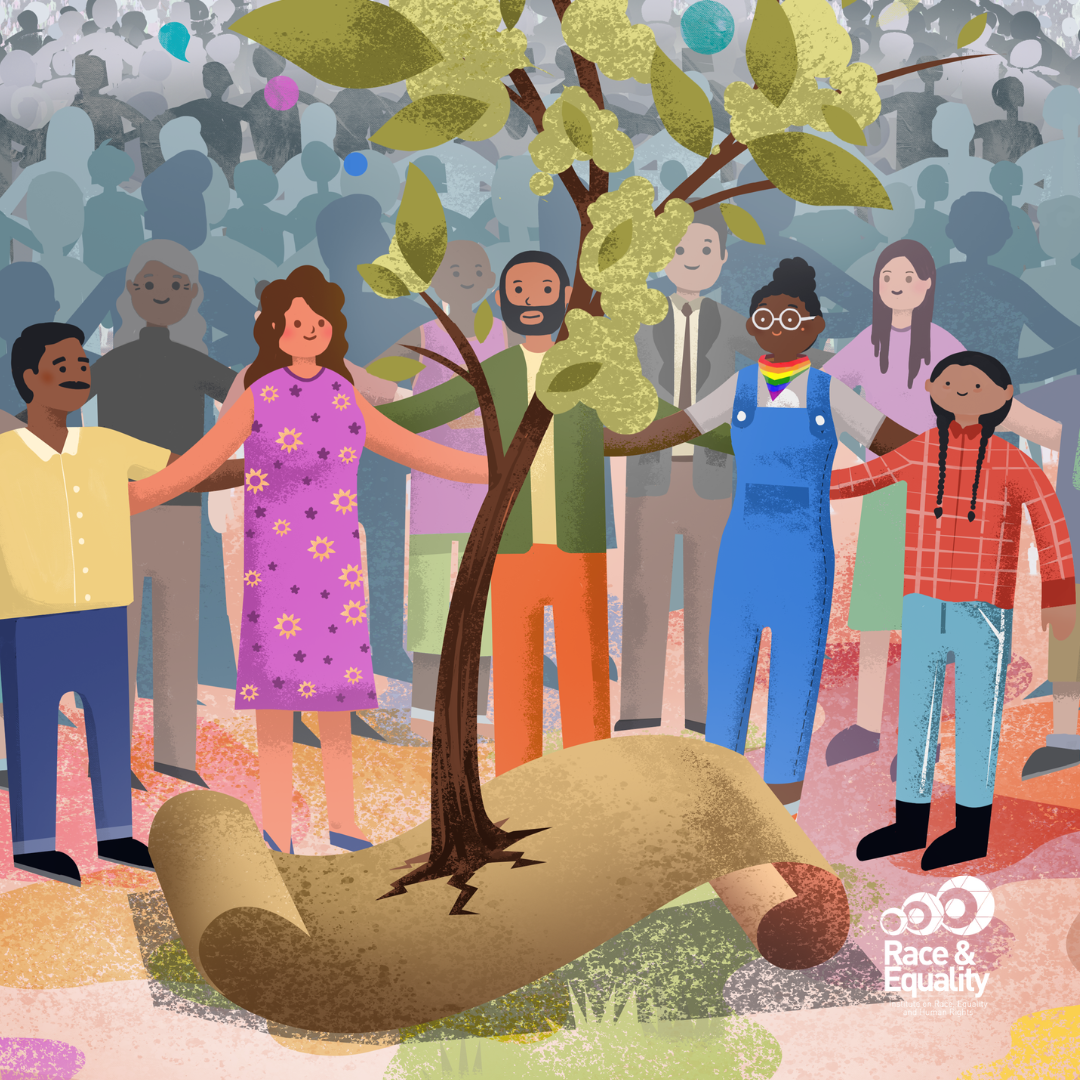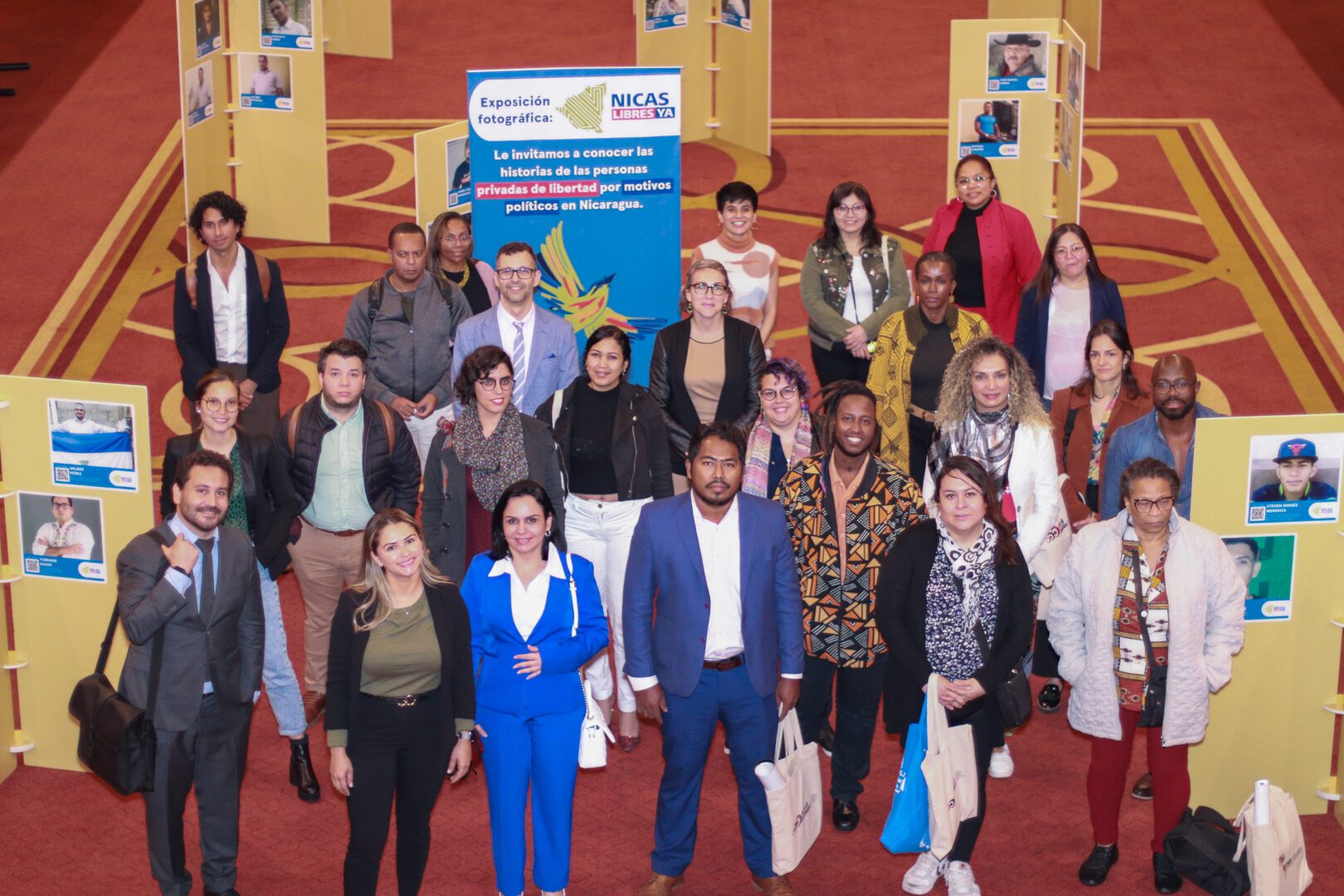The Universal Declaration of Human Rights: A Living Instrument Guiding the Defense and Protection of Human Rights in the Americas
Washington DC, December 8, 2023.– What are human rights? How can human rights be fully enjoyed? Who has the obligation to ensure respect for and fulfilment of human rights? The […]

Washington DC, December 8, 2023.– What are human rights? How can human rights be fully enjoyed? Who has the obligation to ensure respect for and fulfilment of human rights? The answers to these questions are as obvious as they are complex. Despite the fact that human rights are inherent to all people, the enjoyment of these rights is determined by a diversity of factors that every day, in every corner of the world, bring people closer or further away from the goal of living in freedom, justice, and peace.
As we commemorate the 75th anniversary of the Universal Declaration of Human Rights, the Institute on Race, Equality and Human Rights (Race and Equality) wants to assert the relevance of the UDHR to the work of defending and protecting human rights carried out every day by civil society organizations and activists in the Americas. Although human rights violations persist and worsen in the region, we believe that the Declaration is the tool that pushes and strengthens the struggle for human rights.
“In these 75 years of the Universal Declaration of Human Rights, it is important to look back and recognize all that has been achieved since its adoption. Thanks to the Declaration, the world, and the Latin American region in particular, today has a solid mechanism for the protection of the rights of all people. From civil society we know that there is a lot of work to be done to achieve full guarantees, especially at the level of the obligations of States, but we see the Declaration as a living instrument that guides our work,” says Carlos Quesada, Executive Director of Race and Equality.
A Bit of History
Following the atrocities committed during World War II and the creation of the United Nations, the international community set out to create a road map to ensure the rights of all people everywhere and at all times. Thus, on December 10, 1948, the UN General Assembly adopted the Universal Declaration of Human Rights.
But how did they get there? The UN General Assembly considered an initial document at its first session in 1946 and then forwarded it to the Economic and Social Council for consideration by the Commission on Human Rights, which was entrusted with the task of drafting what they initially called the “international bill of human rights”.
At its first session in early 1947, the Commission on Human Rights directed its members to formulate a preliminary draft of the charter, which was later taken up by a Drafting Committee composed of representatives of eight countries, which were chosen on the basis of geographical distribution. Eleanor Roosevelt, the widow of U.S. President Franklin D. Roosevelt, chaired the UDHR Drafting Committee.
The first draft of the Declaration was proposed in September 1948 and more than 50 Member States participated in the final draft. In its resolution 217 A (III) of 10 December 1948, the General Assembly, meeting in Paris, adopted the Universal Declaration of Human Rights. Eight nations abstained from voting, but none voted against.
Did you know?
Delegates from several countries played a key role in ensuring that women’s rights were included in the Declaration. Hansa Mehta of India is widely credited with changing the phrase “All men are born free and equal” to “All human beings are born free and equal” in Article 1 of the Universal Declaration of Human Rights.
75 Years Later
That document, which was formulated under the common ideal that all people live in freedom, justice, and peace, has paved the way for the adoption of more than seventy human rights treaties, which are now permanently applied at the global and regional levels. Race and Equality, in its work to defend and protect the rights of Afro-descendant and indigenous populations, LGBTI+ people, and other vulnerable groups, recognizes and champions international human rights law.
The Universal Declaration of Human Rights is a permanent foundation for our work in documentation, capacity building, advocacy, and strategic litigation. To cite one example, the International Convention on the Elimination of All Forms of Racial Discrimination (CERD) has been a key tool for strengthening allied organizations in their advocacy processes before States and the Inter-American and Universal Human Rights Systems on the rights of persons of African descent.
Meanwhile, the Convention on the Elimination of All Forms of Discrimination against Women (CEDAW) has been a fundamental piece in documentation and advocacy processes with partner organizations in the defense and protection of Afro-descendant, indigenous, and LBTI+ women. In 2022, Race and Equality supported and accompanied a collective of Peruvian feminist organizations in their participation in the review of the CEDAW Committee in Peru, achieving that it included recommendations to the State based on the demands of lesbian women for the first time.
In these 75 years of the UDHR, Race and Equality recalls that the application of human rights must be governed by the principles of universality, interdependence, indivisibility, and progressivity. We believe that the recognition and respect of the following are imperative: (a) that all persons are entitled to all human rights; (b) that human rights are linked to each other and, therefore, the recognition and exercise of one of them implies respect for and protection of many others; (c) that human rights must be recognized, protected and guaranteed in their entirety, that they cannot be fragmented; and d) that it is the obligation of States to ensure progress in the constructive development of human rights, and that any kind of regression is completely prohibited.
In addition, as a way of honoring these 75 years of the Universal Declaration of Human Rights, we have produced an illustration that recognizes the diversity of people in the Americas—and, therefore, the diversity of circumstances that affect them—and symbolically places at the center the Declaration that, in the days of its drafting, Eleanor Roosevelt envisioned it as a document of support, guidance, and inspiration, noting, “this is the first step in an evolutionary process.”
We also recall and put again as a point of reflection an excerpt from the speech “Where do human rights begin?” that Eleanor Roosevelt gave in 1958 on the occasion of the tenth anniversary of the UDHR:
“Where, after all, do human rights begin? In small places, close to home. So close and so small that they cannot be located on any world map: each person’s environment, the neighborhood in which they live, the school or university they attend; the farm, factory, or office where you work. These are the places where every man, woman and child seeks equal justice, equal opportunity, equal dignity, without discrimination. If these rights don’t mean anything there, they don’t mean anything anywhere. Without concerted citizen action to assert these rights close to home, we seek progress on a larger scale in vain.

